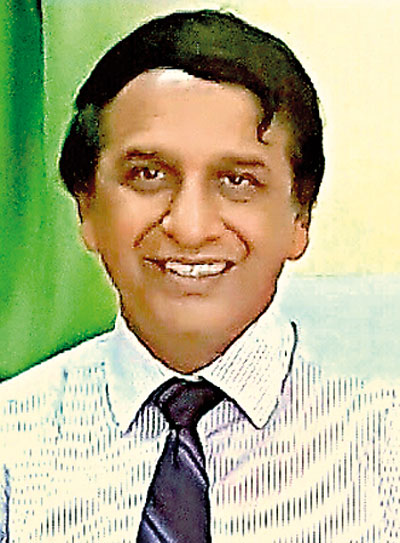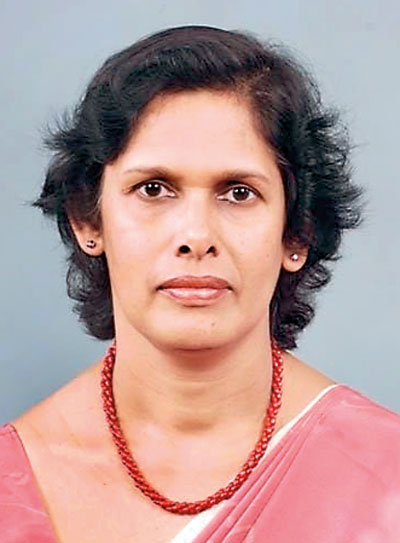News
Strokes: One-stop centre for emergency plus long term care
View(s):By Kumudini Hettiarachchi

Dr. M.T.M. Riffsy
A National Stroke Centre, a model for stroke-care in Sri Lanka, is to be set up in Mulleriyawa, with the foundation stone due to be laid in the next three months.
As Sri Lanka prepares to celebrate World Stroke Day next Saturday, October 29, the Sunday Times learns that the proposed National Stroke Centre will be a one-stop centre providing not only emergency but also multidisciplinary care for long-term rehabilitation of stroke patients.
The theme of this year’s World Stroke Day is ‘Face the Fact: Stroke is Treatable. Lives can improve with better awareness, access and action’.
While Sri Lanka has come a long way in stroke prevention, treatment and care, there are many more miles to go and milestones to pass, it is understood.
“Just this week, on October 19, a Stroke Rehabilitation Unit was opened at the Point Pedro Base Hospital in the North,” said Dr. M.T.M. Riffsy, President of the National Stroke Association of Sri Lanka (NSASL).
Workshops on stroke care have also been conducted for health personnel in different parts of the country, he said, explaining that in Jaffna there were eight, in Batticaloa two and at the National Hospital of Sri Lanka (NHSL), Sri Jayewardenepura, Ragama and Kurunegala one each.
Commending the Health Ministry for the stroke-care improvement journey undertaken, Dr. Padma Gunaratne, NHSL’s Head of the Neurology Institute, points out that for the multidisciplinary care of stroke patients the two arms of infrastructure and human resources have to be developed.
The NHSL celebrated World Stroke Day by organising an in-service training programme on stroke care for nurses in the Colombo District, under the guidance of Dr. Gunaratne.
The ministry, meanwhile, has initiated steps to establish nine more Stroke Units in Ratnapura, Badulla, Jaffna, Polonnaruwa, Anuradhapura, Kurunegala, Karapitiya, Matara and Ampara, the Sunday Times learns, with a stroke centre for every district also being on the cards.
It has also provided the NHSL with facilities such as a Digital Subtraction Angiography (DSA) machine, currently available only in the private sector. This will enable clot-removal procedures to be performed in the state sector for those who have suffered ischaemic strokes in large vessels and have been brought to the hospital within six hours. This is expected to significantly reduce not only deaths but also major disability.

Dr. Padma Gunaratne
With the gradual expansion of stroke-care infrastructure, there are also moves to increase the intake of physio, occupational and speech therapists. The Postgraduate Institute of Medicine (PGIM) has introduced rehabilitation as a postgraduate specialty. The Health Ministry has developed National Guidelines for Rehabilitation with an allocation being earmarked under its Department of Youth, Elderly, Disabled and Displaced.
Explaining that the proposal to set up the National Stroke Centre was submitted back in 2012 by the NSASL to President Maithripala Sirisena when he was the Health Minister, Dr. Gunaratne said that whereas earlier essential clot-busting medication for ischaemic strokes was only available at the NHSL in Colombo, now many hospitals across the country offer this treatment.
The Government is spending Rs. 125,000 per vial per patient, she says, urging people to recognise the early signs of stroke and rush to a major hospital immediately. These hospitals will then carry out a CT scan to check what type of stroke it is and administer the clot-buster if it is an ischaemic stroke.
Taking into account the ‘complex’ nature of strokes, she says that coordination is needed to get hospitals organised to provide optimal stroke care whenever a patient is brought in.
Some of the shortcomings include a dearth of beds dedicated to stroke patients in hospitals as well as a dearth of physio, speech and occupational therapists and also nurses.
The weaknesses in the system include:
* Fewer than 500 rehabilitation beds in the major State hospitals for long-term rehabilitation of all patients with disabilities. This is for a population of 21 million.
* There are only 85 Medical Officers per 100,000 patients in Sri Lanka, compared to 280 Medical Officers per 100,000 patients in the United Kingdom (UK).
* There are only 185 nurses per 100,000 patients in Sri Lanka, compared to 880 nurses per 100,000 patients in the UK.
* There are only 1.7 physiotherapists, 0.5 occupational therapists and 0.1 speech therapists per 100,000 patients in Sri Lanka.
Underscoring the need to strengthen links between the Social Empowerment Ministry and the Health Ministry, Dr. Gunaratne also discusses the shortage of assisting devices such as wheelchairs etc and the huge out-of-pocket expenses that families face. Another important aspect is the need to strengthen community-based rehabilitation.
“We need to support people with disabilities, of whom a majority of the adults are stroke victims, to ensure they are inclusive in their communities. For this, we need more rehabilitation beds to delay their discharge from hospital to allow them to gain full advantage of rehabilitation. This aspect becomes more crucial in view of the transport difficulties patients face and their homes not being conducive for the disabled,” she added.
| Stroke hotline: Need advice on stroke – call the hotline: 011-2687787 |

| Recognising signs of stroke Stroke is a ‘medical emergency’ and stroke remains a silent epidemic. But stroke is treatable, stresses Consultant Neurologist Dr. M.T.M. Riffsy, urging that if any of the ‘FAST’ – Face, Arm, Speech, Time — signs are apparent, the person needs to be brought to hospital immediately. (See graphic) Echoing the need for urgency, Consultant Neurologist Dr. Padma Gunaratne said the person should be brought to hospital within three hours for the best outcomes. “Learn to recognise the signs of stroke, seek medical help immediately and keep away from false beliefs,” she says, stressing the importance of public education and awareness. Outcomes improve drastically with admission to a specialised stroke unit, access to the best professional care, usage of best-practice treatment such as clot-busting drugs and mechanical clot-retrieval and with rehabilitation as a critical step in the treatment process, it is learnt. This is why people need to be aware about the ‘FAST’ signs of stroke and rush anyone with those signs to hospital. For, the statistics are chilling: * Every six seconds someone somewhere will die of stroke. * Every two seconds, someone has a stroke somewhere. * 1 in every 100 in Sri Lanka has had a stroke. * Nearly 6 million people worldwide will die from stroke this year, with 80% being from developing countries. * 1 in 6 people will have a stroke at sometime in their lives. * Stroke is responsible for more deaths annually than those attributed to Acquired Immunodeficiency Syndrome (AIDS), tuberculosis (TB) and malaria combined. * In an ageing global population (Sri Lanka also has a rapidly ageing population), stroke is the second leading cause of death for people above the age of 60 years. * Stroke also attacks children, including newborns. Another very important factor is that primary and secondary prevention treatments and lifestyle changes can reduce the risk of a stroke.
|

